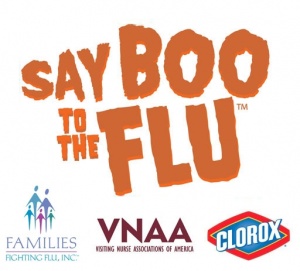April 28th, 2009 by Dr. Val Jones in Announcements
No Comments »
Then you definitely need to subscribe to MedPage Today’s special swine flu news feed.
Just click here:
MedPage Today Swine Flu News
Get regular, peer-reviewed news updates delivered to your RSS reader of choice…
Also stay tuned for updates from the International Influenza Vaccines for the World conference, in Cannes, France. MedPage Today has sent reporters there and will be giving Better Health key updates. I’ll keep you posted.
April 27th, 2009 by Jon LaPook, M.D. in Better Health Network, Video
No Comments »
Due to popular demand, and the need for better public education about the swine flu outbreak, Dr. Jon LaPook will be offering the first ever live webcast at CBS tonight.
Check it out here (click on the link if video below doesn’t work at 7pm):
March 5th, 2009 by Stacy Stryer, M.D. in News
No Comments »
By Stacy Beller Stryer, M.D.
Between seeing the hoards of patients with multiple days of high fever and sore throat; taking care of my own daughter who was sick almost an entire week; and trying to allay the fears of countless parents who read about the deaths of two teens in our community due to influenza, I am exhausted. There is no doubt that the influenza virus has arrived and is wreaking havoc in our community. According to the Washington Post, our region has just begun to see an increase in the virus but has not yet reached its peak. Each year, the virus peaks at a different time, usually between December and March, although we only know after-the-fact when the peak incidence occurred.
According to the Centers for Disease Control, approximately 5% to 20% of the United States population develops the flu, over 200,000 are hospitalized, and about 36,000 people die. This includes children, particularly those with chronic illnesses such as asthma and heart disease.
There are many different strains of influenza virus and each year the strain changes. Researchers try to determine which type will be most prevalent for that particular year and, based on this information, develop a flu vaccine with the three most likely types of influenza A and B. Even if scientists aren’t 100% correct, antibodies which are made against one strain can provide protection against different strains if they are closely related. In addition, it is possible that a related strain, while not entirely preventing an illness, can still decrease its severity and prevent flu-related complications. For this reason, the CDC recommends that everybody get the flu vaccine each year.
So, how do you know if your child has the flu and not another virus? Often it is difficult to tell the difference. People use the word “flu” liberally and often, when someone says they have the flu, they actually don’t. You must actually be tested for it to know if you truly have the influenza virus. However, if you followed me in my office for one day, even four hours, you would get pretty good at picking out who probably has the flu. The specific symptoms can vary somewhat from year to year but they tend to be much more severe than other viruses. In general, they include several days of high fevers, headache, dry cough, sore throat, runny or stuffy nose, extreme tiredness and sore muscles. The cough is usually the last symptom to go away.
The flu is spread from respiratory droplets, meaning people who cough and sneeze can spread the virus to others nearby. People are usually infectious about one day before they get sick until about five days after they become sick, although the infectious period can vary.
What can you do for your child? First of all, you can try to prevent them from getting the flu in the first place by getting the flu vaccine in the fall (or even in January or February if the peak hasn’t occurred), and by teaching good hygiene and hand washing techniques. You can also remind your children to stay away from others who are sick and to keep their hands away from their own faces.
If your child does get the flu, antiviral medications are sometimes an option to help decrease the severity and length of the illness, and to prevent potential complications. In order to be effective, however, it must be given within the first 48 hours of symptoms or before symptoms even develop. Each year, the Centers for Disease Control tests the flu virus in different regions throughout the country to see if the particular strains are resistant to the antiviral medications available. This year they have found that the influenza A is highly resistant to Tamiflu, one of the more common antiviral medications prescribed. Data so far shows that most of the circulating viruses this year are the “A” type. Tamiflu helps children feel better, on average, about 1.5 days before someone who has not taken it.
As a physician, I must watch for evidence of bacterial infections that have developed along with influenza virus in my patients. More common bacterial co- infections include pneumonia, ear infections, and sinusitis. Dehydration and worsening of chronic medical problems, such as asthma, can also occur. In 2006-2007, the CDC documented an increased incidence of staphylococcus aureus infections and methicillin-resistant staphylococcus aureus (MRSA) in patients who were hospitalized for influenza or who eventually died. If your child has symptoms that continue to worsen or that don’t begin to resolve after several days, or if your child has shortness of breath, blue lips, cannot speak full sentences or other signs of breathing problems, you should see a doctor immediately.
November 4th, 2008 by Dr. Val Jones in Opinion, True Stories
5 Comments »
Election anxiety has America on the edge of its seat. I anticipated long lines and a lot of drama, so I voted early to avoid the rush. That left me with nothing election-related to do today, so I decided to head over to my local pharmacy and get a flu shot instead.
Last year the flu vaccine was only 50% effective because experts did not correctly predict which viral strains would victimize Americans. This year I have my fingers crossed that the Brisbane and Florida strains included in the vaccine will do the trick. After all, Influenza is the single leading cause of vaccine-preventable disease in the U.S., with estimates between 15 million and 60 million cases in the US a year among all age groups. Influenza leads to 200,000 hospitalizations and about 36,000 deaths a year in the U.S., mostly in infants and the elderly. I’ll never forget the touching story of how one family lost their three and-a-half year-old daughter to the flu.
So I arrived at the pharmacy only to find a disorderly group of flu-shot seekers, pacing near the entrance to the retail clinic. About 20 minutes later a young woman with a clipboard and sign up sheets came out and started asking people what kind of insurance they had. When my turn came she informed me that my insurance plan was not participating, and suggested that I leave. I asked if I could pay out-of-pocket for the shot and she said that I could and gave me a consent form. More people arrived without any movement in the line, and I overheard one person commenting that the nearby polling booth wasn’t moving as slowly. Another customer decided to leave to go vote and then come back later for the shot.
Forty minutes later my name was called and I entered a small room littered with papers and syringe caps. I rolled up my right sleeve and asked the technician about his injection technique. I watched him carefully draw up half a cc of vaccine from a multiple-use bottle.
He then asked me how I was going to pay. I presented my credit card and he said that he only accepted cash or check. I said that I had no idea that credit cards weren’t accepted and he seemed surprised that I wasn’t aware of the retail clinic policy. A large envelope was leaning against his chair leg, full of $30 cash deposits for the shot. Read more »
October 20th, 2008 by Dr. Val Jones in Patient Interviews
No Comments »
 Most people assume that the flu is an inconvenience – an infection that causes a week of fevers, body aches, and discomfort. But it can be far more serious than that. In some cases, the virus can be fatal. I interviewed Joe Lastinger about the tragic loss of his 3 and-a-half year-old daughter to influenza. You can listen to our interview here.
Most people assume that the flu is an inconvenience – an infection that causes a week of fevers, body aches, and discomfort. But it can be far more serious than that. In some cases, the virus can be fatal. I interviewed Joe Lastinger about the tragic loss of his 3 and-a-half year-old daughter to influenza. You can listen to our interview here.
Dr. Val: I’m so sorry to hear about your daughter’s death from influenza. Can you tell me a little bit about the events that led up to it?
Joe: The events were pretty unremarkable, until she died suddenly. Emily was three and a half at the time and had just started pre-school. One day she came home from school and she was very tired. She wanted to take a nap. Normally she didn’t take naps so we knew something was different. We took her to the pediatrician the next day and she was diagnosed with the flu. We were counseled to give her fluids, Tylenol and Motrin around the clock to control her fever, and to expect it to resolve in about a week.
However, Emily began experiencing more nausea a few days in. We contacted the pediatrician and she asked us a series of questions about her symptoms – but since she was urinating regularly, wasn’t having bloody vomit, or any other serious symptoms we were reassured. The next day my wife was in the kitchen (near the bedroom where she had left Emily) and I heard her scream. She found Emily on the ground, not breathing. We called 911 and the paramedics were able to get her heart started. She was transferred to the local children’s hospital, and was intubated. Unfortunately there was never any sign of brain activity and they slowly maxed out all the drugs they were giving her to keep her alive.
Read more »












